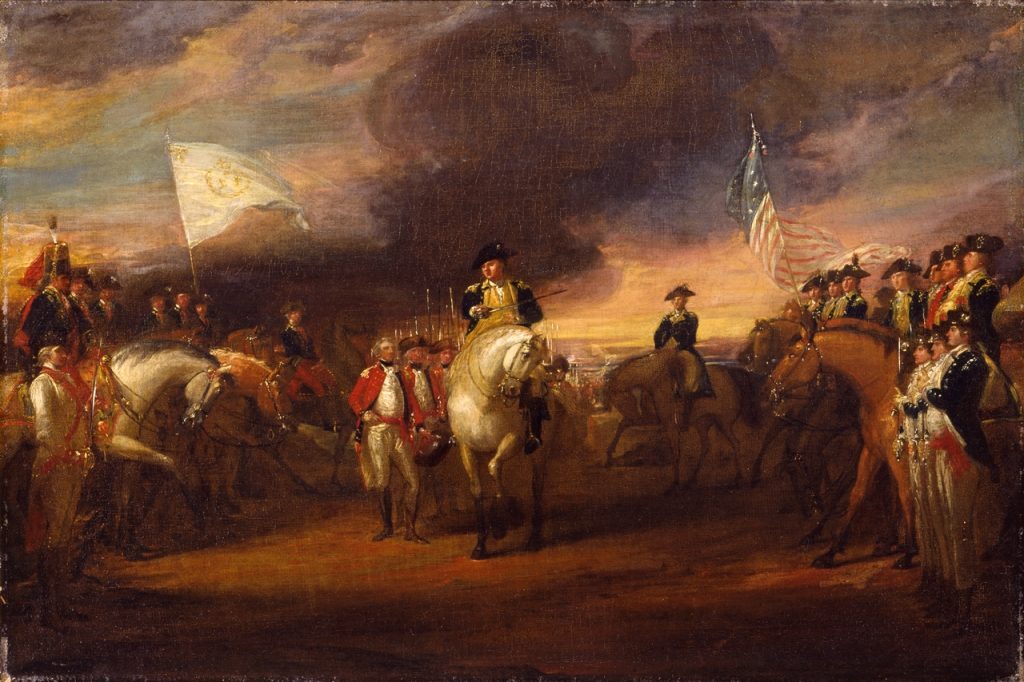Study for “The Surrender of Lord Cornwallis at Yorktown” (work of art)
Artwork Info
Key Ideas about this Work of Art
- This painting depicts the surrender of the British Army at the end of the American Revolutionary War.
- British General Charles Cornwallis was not present at the surrender. The surrender happened at the Battle of Yorktown in 1781.
- This is a small study (preparatory work) for a larger painting that hangs in the United States Capitol rotunda.
- John Trumbull served in the Revolutionary War. He later became famous for his paintings of the Revolution and of America’s founding.
- Trumbull’s paintings focused on capturing the drama of the moment rather than being historically accurate.
Learn More
Despite the painting’s title, British General Charles Cornwallis was not actually present at the surrender. His deputy, Charles O’Hara, surrendered in his place. American General George Washington recognized this as a sign of disrespect. Washington had his own second-in-command, Benjamin Lincoln, accept the surrender. Benjamin Lincoln is depicted on horseback in the center of the painting. Washington is depicted on horseback in the background.
John Trumbull volunteered as a soldier for the Continental Army. He served in the early months of the Revolutionary War. Trumbull later became a well-known painter of the Revolution and of America’s founding.
Trumbull’s style was inspired by European history painting. He painted scenes of key events that focused on the drama and heroism of the moment. The scenes he painted were not meant to be accurate, but they have influenced the way Americans view and remember the country’s history.
The Surrender of Lord Cornwallis at Yorktown is one of 12 large paintings by Trumbull that depict events from the American Revolution. Thomas Jefferson supported Trumbull’s project. After Trumbull completed the large version of this painting, he gave this smaller version to Jefferson as a gift. The larger version of this painting now hangs in the central rotunda of the United States Capitol in Washington, D.C.
tags: Revolutionary War, artist’s process
Additional Resources
Resources for Teachers
- Read an article about John Trumbull’s painting.
- View more paintings by Trumbull.
- Read an artist’s thoughts on creating studies.
Resources for Students
- View the finished painting by Trumbull.
- Watch a video about the British surrender at Yorktown.
- View Trumbull’s famous painting of the signing of the Declaration of Independence.

